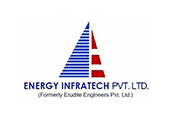Seismic Refraction Tomography (SRT)
Seismic techniques utilize the fact that elastic waves (or seismic waves) travel with different velocities in different rocks. Seismic techniques like seismic refraction/reflection, seismic tomography have prime applications in civil engineering and underground structures. By generating seismic waves at a point and observing the time of arrival of these waves at a number of other points on the surface, it is possible to delineate the velocity distribution and locate subsurface interfaces based on seismic wave velocities. Seismic refraction method is extensively utilized for in-situ investigations because the seismic velocity is an indicator of porosity, relative quality and rippability of rock mass. They provide valuable insights into the subsurface structure, allowing engineers to design structures that are both safe and cost-effective. Additionally, seismic refraction surveys are used in environmental studies and natural resource exploration, aiding in groundwater exploration and environmental remediation efforts. Recent advancements in softwares and hardwares have improved the reliability of the results significantly.

Application of Seismic Refraction Method
- Bedrock profile, rock quality and depth
- Fractures and weak zones
- Ground water exploration
- Slope stability studies
- Investigation of tunnel route and highways
- Landfill investigations
- Stratigraphic mapping
- Assessment of engineering properties of soil/rock mass
- Predicting the reppebility of specific rock types
- Locating sinkholes
SRT Profile Result


















